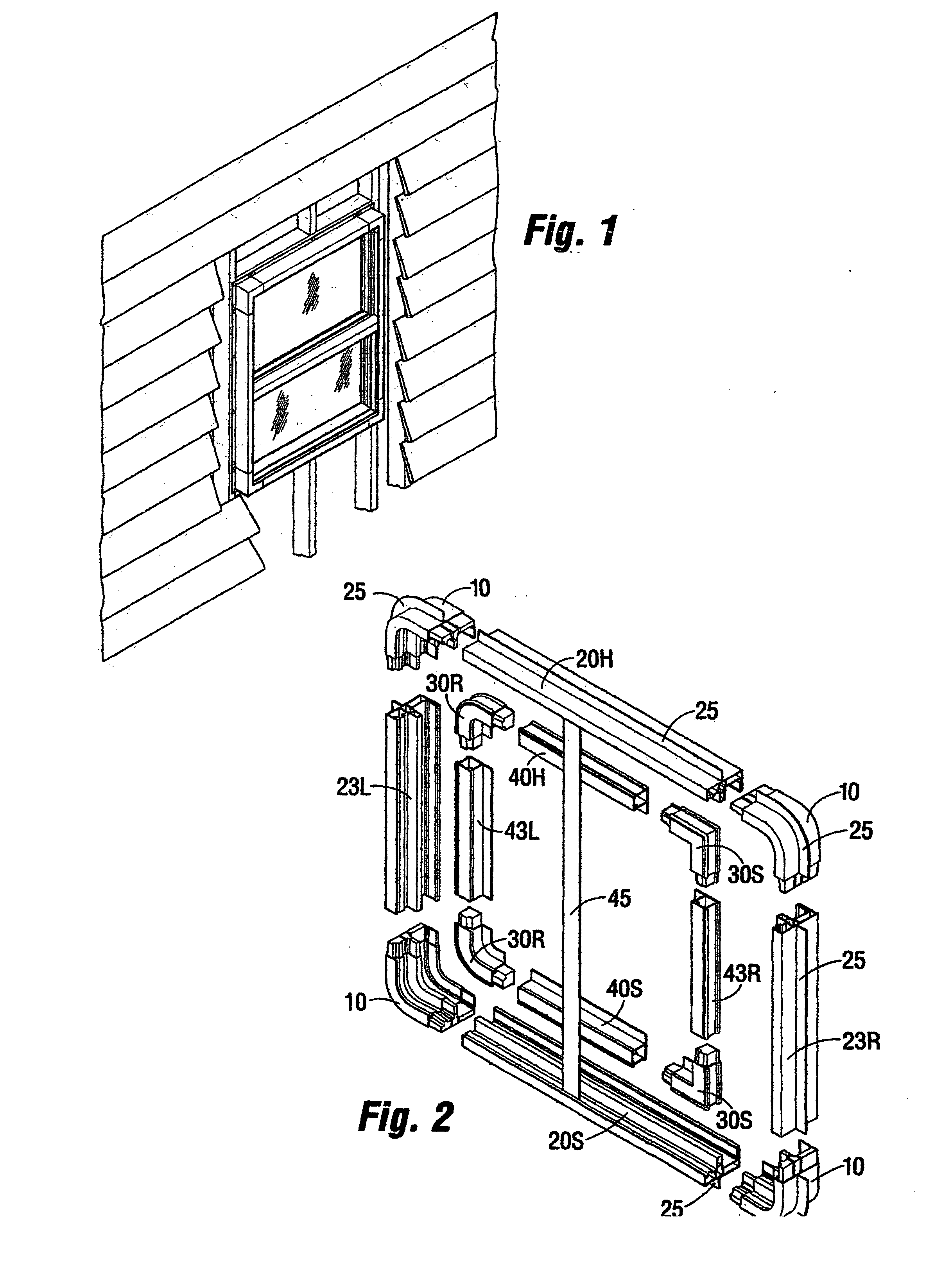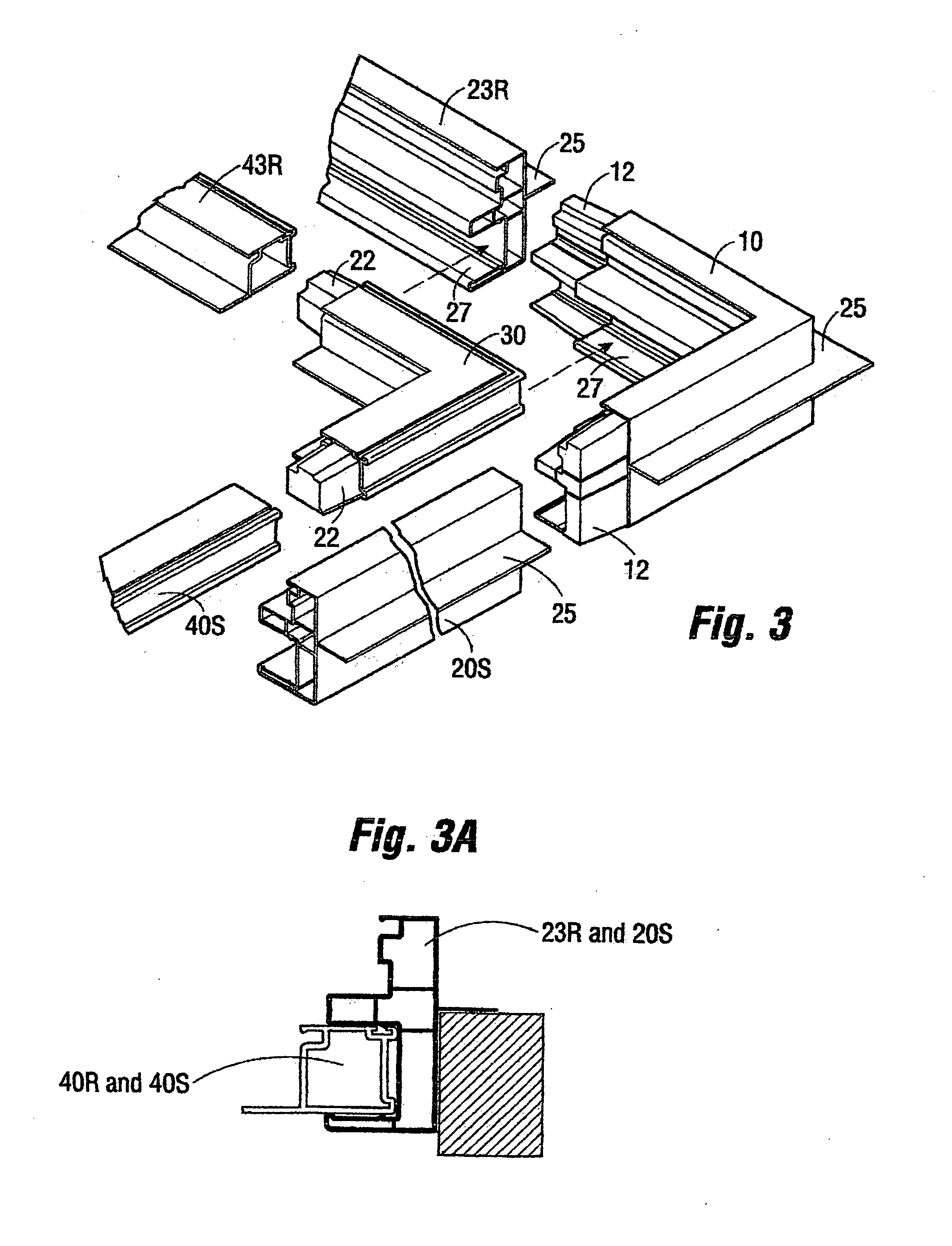Water-tight windows with preformed corners
- Summary
- Abstract
- Description
- Claims
- Application Information
AI Technical Summary
Benefits of technology
Problems solved by technology
Method used
Image
Examples
Embodiment Construction
[0030] The window construction provided by the present invention is particularly applicable to vertically or horizontally hung windows, to horizontally sliding (usually bypassing panes) windows, to conventional double-hung windows wherein one or both sashes are movable, and to fixed windows in all types of polygonal shapes. For purposes of explanation, a window having a sliding sash, and constructed with radius (curved) corners, is shown in FIG. 2. The outer portion (frame) of the window, according to the invention, comprises a header 20H, a sill 20S, and complementary side-posts (iambs) 23L and 23R, which are extrusions of plastic, vinyl, rubber, or some composite of natural and / or synthetic material having customized cross-sectional configurations which are designed to impart adequate beam strength to the linear extrusions. The internal portion (sash) of the window also has a header 40H, a sill 40S, and complementary side-posts (jambs) 43L and 43R. For interlocking purposes, there...
PUM
 Login to View More
Login to View More Abstract
Description
Claims
Application Information
 Login to View More
Login to View More - R&D
- Intellectual Property
- Life Sciences
- Materials
- Tech Scout
- Unparalleled Data Quality
- Higher Quality Content
- 60% Fewer Hallucinations
Browse by: Latest US Patents, China's latest patents, Technical Efficacy Thesaurus, Application Domain, Technology Topic, Popular Technical Reports.
© 2025 PatSnap. All rights reserved.Legal|Privacy policy|Modern Slavery Act Transparency Statement|Sitemap|About US| Contact US: help@patsnap.com



